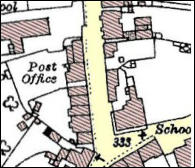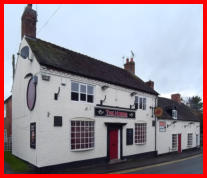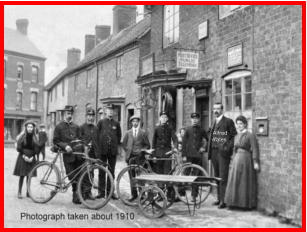





High Street, Gnosall
The three maps below are 25 inch to mile “County Series” Ordnance Survey maps and show how some parts of the High
Street have changed over time.
Click on any of the coloured spots below for further details. Click anywhere to close the pop-up
The map on the left of each group below shows the view of the photographs. Click any photo and it will be enlarged.
Navigation buttons at the bottom of the enlarged photo allows you to move through the pictures or to run a slideshow.

Click any photo and it will be enlarged. Navigation buttons at the bottom of the enlarged photo allows you to move through
the pictures or to run a slideshow.



High Street Post Office
East side of the High Street
West side of the High Street
Virtual tour of the High Street

The first reference we have to Gnosall High Street is in a Manorial Roll of 1592: “Thomas Warter has deposited his dung in the
high street of Gnosall by which he has obstructed the said street to the hurt of the Queen’s lieges passing through the same.”
However, in England generally, villages were growing up along a street (or around a green) back in the 8th and 9th centuries,
1
and the part of the street north of the Coop must be at least as old as the Saxon Church. There are medieval houses along this
section. The lower part of the street must have developed later. Doley Brook and the boggy land surrounding it meant the
present route to Newport may not have been in use until a causeway or bridge was constructed around the 14th century.
2
Buying was generally done at markets and fairs in medieval times but handmade items would be bought direct from the
craftsmen, such as smiths, wheelwrights, carpenters and weavers.
The 1841 census shows in the High Street area: tailors, saddlers, bakers, a cooper, butchers, publicans (The Duke’s Head and
the Horns), a wheelwright, a milliner, a hairdresser, a grocer, a dressmaker, a turner, a keymaker and a blacksmith. There were
several shoemakers but it’s unlikely they would be selling direct to the public
1
Christopher Taylor, Roads and Tracks of Britain, 1979
2
Mike Corfield
F. Potter



























Click above for home screen
























































